A Conversation With Sophia Takal, Lawrence Levine, and Kate Lyn Shiel (GREEN)
(Green screens this weekend, May 5-8, 2010, at the Maryland Film Festival in Baltimore. Visit the film’s official website to learn more.)
Filmmaker couples—especially successful ones—are a rarity. Sophia Takal and fiancé Lawrence Levine starred together in Levine’s 2010 film Gabi On The Roof In July, where they played contentious siblings (Levine wrote and directed, and Takal produced and edited). As Takal tells it, that experience stirred up troubling emotions and drama between the couple, which pushed Sophia to examine her self-proclaimed problem with “intense jealousy” and the lack of self-confidence that cornered her into competitive and manipulative relationships with other women.
Shot in just two weeks with a spartan crew, Green follows literary hipster couple Genevieve and Sebastian to the country, where Sebastian is dubiously contracted to write about sustainable farming. Though passive on the surface, Genevieve seems aglow with inner resentments and angers, and when pretty Robin wanders over from next door, Genevieve becomes enflamed. Sophia cast Kate Lyn Shiel—the actress who played her best friend in Gabi and who is a close friend of the couple—as Genevieve. Levine plays Sebastian, and Takal herself plays Robin, the Southern girl who stirs up Genevieve’s dark and destructive fantasies.
The courtship between Genevieve and Sebastian features expectedly stilted wordplay and cultural one-upsmanship, but, white Brooklynites aside, this film is a sharp and deliberate departure from the mumblecore genre. DP Nandan Rao does much to illuminate the emotion and eros in Takal’s swift script, and overall it is an auspicious and elegant debut from the first-time writer/director.
Green world premiered at the 2011 SXSW Film Festival, earning Takal the “Chicken & Egg Emergent Narrative Woman Director” award (before moving on to IFFBoston and the Maryland Film Festival). I met up with Sophia, Lawrence, and Kate in Austin to talk about improvising, the “m” word, and using creativity to combat jealousy.
Hammer To Nail: Green seems to be a very collaborative film. How did you navigate knowing each other personally and then turning that into a fictional film?
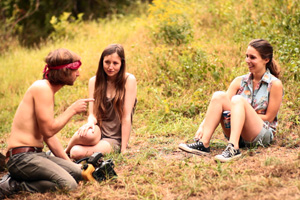 Sophia Takal: Kate lives with us, so the three of us have developed an intimacy. I knew I wanted to make a movie with Kate, and I knew I wanted to make a movie with Lawrence. The first thing I did was I say I want to make a movie with all of us, and then I sat down and wrote an outline really quickly, in one night, then I put it away for a number of months. When I decided I finally wanted to make a movie I took that outline out and I spoke with Kate and Lawrence about their characters. We talked for a really long time about their backgrounds, and their histories, and what was important for them to know about each other from their [past] relationships. Then I wrote a script. Almost all of the scenes were scripted, but some were improvised.
Sophia Takal: Kate lives with us, so the three of us have developed an intimacy. I knew I wanted to make a movie with Kate, and I knew I wanted to make a movie with Lawrence. The first thing I did was I say I want to make a movie with all of us, and then I sat down and wrote an outline really quickly, in one night, then I put it away for a number of months. When I decided I finally wanted to make a movie I took that outline out and I spoke with Kate and Lawrence about their characters. We talked for a really long time about their backgrounds, and their histories, and what was important for them to know about each other from their [past] relationships. Then I wrote a script. Almost all of the scenes were scripted, but some were improvised.
Lawrence Levine: We shot for two periods. The initial shooting script was a combination of scripted scenes and then scenes that were more detailed outlines. Then, just because of the way that our schedules were, it was about three weeks between the first week of shooting and the second week of shooting. In that time Sophia reviewed that footage and wrote versions of the scenes that we had improvised during the first week, and then we reshot pretty much all of those scenes. So almost all of the movie that you see is scripted.
ST: We reshot all of the scenes that were improvised. There were a couple of scenes where I randomly cared about the way the lines were said. Not important lines, just I got it in my head that it was important. But for the most part you guys were allowed to change the lines if you wanted to.
Kate Lyn Shiel: You were pretty open.
H2N: So the final film is pretty close to the script?
ST: Yeah.
LL: Oh yeah.
ST: I don’t think we diverged at all.
LL: Nope, not story-wise. And in dialogue only in the most minor ways. But of course some of those scenes might feel… there are instances of scenes that really feel improvised to me, that feel totally spontaneous and real, that were scripted. Like the sequence with the ice cream.
ST: When we’re eating ice cream?
LL: Yeah, that’s a scene to me that feels very improvised but was scripted from an earlier improvisation.
H2N: When you had the outlines of the scenes was it emotional beats that you would target? Or thoughts or phrases?
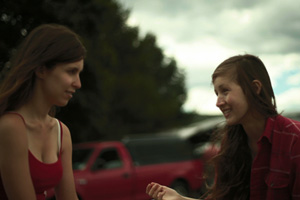 ST: No, it would be like, “Robin comes and asks them if they want beer.” I just didn’t feel like writing out the exact lines because I wanted it to be how someone would normally say it. I’d never written anything so I didn’t think I would contribute anything if I just wrote, “Do you want some beer?” They were pretty detailed and it was less emotional… although, because we know each other so well we sort of talked about that, and also intuitively I think we knew what we wanted from the film.
ST: No, it would be like, “Robin comes and asks them if they want beer.” I just didn’t feel like writing out the exact lines because I wanted it to be how someone would normally say it. I’d never written anything so I didn’t think I would contribute anything if I just wrote, “Do you want some beer?” They were pretty detailed and it was less emotional… although, because we know each other so well we sort of talked about that, and also intuitively I think we knew what we wanted from the film.
KLS: There were certain scenes that we talked about the ways in which dialogue-wise we could get to certain places emotionally, like the scene at the end when Robin comes with her guy that she’s dating and Sebastian asks them in for a drink, we were trying to figure out how to navigate that. I think we did key words and phrases that we wanted to hit in order to move the scene along and get it to where it needed to be.
LL: It’s different than a normal film set where you have a schedule, and a lot of crew, and people to think about and take care of. When you have a film set that’s got a bigger cast and a bigger crew and there’s a more elaborate production you’re more regimented.
ST: We only had a DP and a sound person, that was our whole crew.
LL: And the three of us are all very close, so it was a much more relaxed and collaborative atmosphere. All we knew was that we had fourteen days to shoot the movie, and as long as we were moving at a pace where it seemed like we were going to do that we would kind of just take our time. And if a scene wasn’t working we could talk about it, redo it, think about it. [Sophia] could go back and rescript it.
ST: It was really nice. Most of the time it was low-key.
H2N: You mentioned in your notes that with Gabi it felt like it was more hectic?
ST: [For our production] It was summer, in nature…
H2N: You used a lot of natural light?
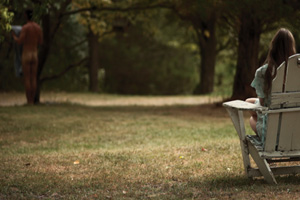 ST: Yeah, we used the [Canon] 5D, which doesn’t need a lot of light. That’s part of the reason why we used it.
ST: Yeah, we used the [Canon] 5D, which doesn’t need a lot of light. That’s part of the reason why we used it.
H2N: The cinematography is beautiful.
ST: Thank you.
H2N: To get back to the improv, I did notice there were a lot of long takes. Did you do a lot of takes since you were trying to run the scene all the way through?
ST: It depended on the scene. I definitely didn’t want a lot of setups, I wanted as much of the film to happen in one take of each scene as possible. Sometimes, particularly with the improvised scenes, or the outlined scenes, we did maybe ten or twelve takes. But that’s what we did for Gabi too, and that was scripted.
LL: I think you did fewer takes for this film than we did on that one. I think eight is the most we ever did.
ST: Remember when I insisted on doing that one take over and over and over again, when I arrive with the beer and the magazines and talk to [Genevieve] about Sudoku? That was a much longer scene, and I insisted on doing it so many times because I kept thinking my accent was really bad. [They laugh] Then eventually I gave up.
LL: Yeah, but I only think we did that eight times.
ST: That was the most we did?
LL: Yeah.
ST: Oh, that’s another thing, everyone says that the [Canon] 5D is really hard to keep focus on, but [our DP] was so good, and he was always where he needed to be, so I don’t feel like we ever had to do anything again because of camera. Because I was acting in it I wasn’t watching all the playback, so I would do [the scene] a bunch of times to sort of ease into it and get into it. I found that it was really hard to direct and act. I kept getting distracted and in the middle of a scene I would totally lose focus and be really worried about some random thing. I think the times that we did a lot of takes were mainly when I was…
LL: Tripping out. It’s lucky that we work together because on my film, which I was also in, on scenes that she wasn’t in I could always ask her if we were ready to move on. And if she said, “Yeah,” I usually just moved on. And you did the same, often. We have another set of eyes that we trust watching the film.
ST: Yeah. I trusted everyone.
LL: In this case everyone.
H2N: It seems like a very personal story, looking at the theme of jealousy between women, and also you and Kate being friends but almost being rivals in this film. That was a really interesting element for me, because I agree, you don’t see many films that go there. Did you feel like it was cathartic?
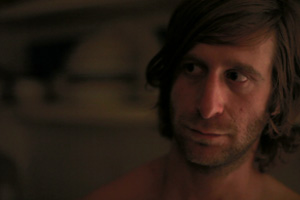 ST: I thought it was going to be cathartic but I’m still jealous. But maybe less so. The thing I’ve been thinking about a lot lately is I don’t think that Lawrence made me feel this way, at all. He’s super supportive and wonderful. But in my mind I felt like I was totally dependent on him for everything, in a weird way. And that made me really jealous because I felt like, if he’s off with a girl and he decides to fall in love with her, then I’ll be all alone and I’ll have nothing, because I haven’t created anything. So making this movie helped in that way because I feel like I have something, even though we worked together on it. I know it’s a weird perception. I guess I’m getting a little better about being jealous. I think maybe I’m just growing up.
ST: I thought it was going to be cathartic but I’m still jealous. But maybe less so. The thing I’ve been thinking about a lot lately is I don’t think that Lawrence made me feel this way, at all. He’s super supportive and wonderful. But in my mind I felt like I was totally dependent on him for everything, in a weird way. And that made me really jealous because I felt like, if he’s off with a girl and he decides to fall in love with her, then I’ll be all alone and I’ll have nothing, because I haven’t created anything. So making this movie helped in that way because I feel like I have something, even though we worked together on it. I know it’s a weird perception. I guess I’m getting a little better about being jealous. I think maybe I’m just growing up.
LL: I’m a lot older than Sophia, about eight years. When we first got involved I just had done more because I’d been alive longer, and she’s a very ambitious person and I think for her… maybe you felt overshadowed by me or something? That can make people insecure. So I think her making this film was a way of asserting herself. She really did. [They laugh]
H2N: So you wrote, directed, and edited the film?
ST: Yeah. [They laugh]
H2N: Did you consider working with another editor?
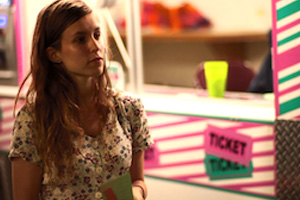 ST: No, I really love editing. I edited Gabi too. I always think about it at some point when I’m tired of watching the footage. But I really love editing, so I was glad to get to do it again.
ST: No, I really love editing. I edited Gabi too. I always think about it at some point when I’m tired of watching the footage. But I really love editing, so I was glad to get to do it again.
LL: It’s lucky she loves it too, because we make these movies for nothing, and we can’t really afford another editor. We did talk to a few for Gabi and they all wanted money, and we didn’t even have a little [money], so it’s great that she’s so good. We couldn’t find anybody better anyway.
ST: Thanks.
H2N: Was the composer someone you brought on earlier in the project? The score was a huge element of the film.
ST: The music is great, right? He is someone I met about a year ago. I knew I wanted it to have sort of a horror or eerie tone to it, and I was in the car after the first week of shooting, returning my friend’s camera, and there was a radio show that was playing really weird, ambient noise music, and Lawrence and I were like, “Oh, that’s the type of music we want.” Then I was describing it to our DP and he was like, “Ernesto makes music just like that,” and he sent me a bunch of stuff, and it was so perfect.
H2N: So it was someone that your DP knew?
ST: Yeah. And he made a bunch of stuff just for the movie after we were done editing it, and I’m so happy with it.
LL: It was just a serendipitous thing.
ST: Yeah, I just heard it and was like, “This is exactly what needs to be in the movie.” And some of the pieces he wrote from before, they fit totally perfectly. Like the last scene, right when she gives the blowjob, that was something he composed before the film, and it fits exactly. So I was really happy and excited to get to work with him.
H2N: There’s a title that could be applied to films made by people from Brooklyn, who are young, white, and dealing with relationship issues. To me this film was very specific, and the dialogue was very pointed even though it was casual. Was moving away from mumblecore something that you thought about?
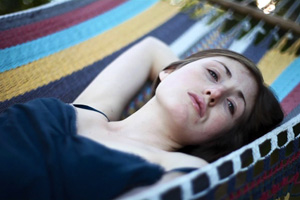 ST: Yeah, it definitely was. I love all of those movies, but I definitely wanted to… I had watched a lot of Ozu films, so I knew I wanted to try a slower movie… a little bit more meditative, a little bit more internal, in a way. I think mumblecore movies are really honest and natural, but I wanted to use the medium to explore someone’s psychology, and what was going on inside of [Genevieve]. That was important to me. So I definitely did want to step away from handheld naturalism. And I wanted to set it somewhere else.
ST: Yeah, it definitely was. I love all of those movies, but I definitely wanted to… I had watched a lot of Ozu films, so I knew I wanted to try a slower movie… a little bit more meditative, a little bit more internal, in a way. I think mumblecore movies are really honest and natural, but I wanted to use the medium to explore someone’s psychology, and what was going on inside of [Genevieve]. That was important to me. So I definitely did want to step away from handheld naturalism. And I wanted to set it somewhere else.
H2N: Where did you shoot?
ST: We shot in Pennsylvania, but it’s supposed to be the South. My dad lives in Pennsylvania, we shot around where he lives.
LL: It’s something we thought about with my film too. We like mumblecore, we like naturalism, but we felt it’s time to do something different. I was trying to broaden the scope. I was influenced by Robert Altman and Woody Allen, and wanted to make something sharper, more expansive. And Sophia wanted to do something more psychological. Mumblecore films are about the outside of things, which is good, which is interesting, but this is more a story about a single protagonist. It’s Kate’s psychology that’s the subconscious, subliminal reality of the film. And you don’t really see that in a lot of the first wave of mumblecore. I think you see it a lot now.
H2N: I do think performance has a lot to do with it. There’s even that argument that Sebastian and Genevieve have about Genevieve not being verbal, and not articulating. What was that like for your performance, having to draw on these deeper themes and thoughts?
KLS: Sophia and I talked about it a lot before we started shooting. We had talked about those feelings outside of the context of the film, because we’re really close friends. Those feelings are something that we’ve both experienced, and are kind of immediate for us. I’ve felt irrationally jealous before, you know? And I think we’ve both had experiences with female friendships that have gone really wrong just because we couldn’t be supportive of one another, and I think we’re really conscious of that impulse in each of us. We try really hard in a conscious way to be open with that, and deal with those feelings on a very deep level so that we both know what page we’re on, and don’t let jealousy get the better of us. But what was it like to play the part? I saw where the character was coming from, just from relationships I’ve had in my own life.
ST: Was it fun playing Larry’s girlfriend?
KLS: Oh my god, it was so much fun. [They laugh]
LL: Yeah, he’s a real charmer.
KLS: It’s like the best thing that’s ever happened to me. [They laugh] No, it was great. They’re both so talented that it’s great working with them.
ST: Ditto. See? We’re supportive.
LL: In public. [They laugh]
H2N: What’s next for all of you?
ST: I’m acting in a lot of movies, which I’m really excited about. I’m about to go down to Argentina, right after SXSW, to act in something down there. And we like to switch off, so I think the next project Lawrence is going to direct. Although we’re thinking about doing it together, as the next step.
LL: We have one movie that we want to co-direct.
ST: But I don’t know…
LL: We’ll see if we can actually do that.
ST: Every day, depending on how well we’re getting along, depends on if we’ll co-direct. [They laugh]
LL: I’m writing a thriller that I want the three of us to be in. Sophia and I came up with the story and I’m going to write the script when I get back to New York.
ST: Yeah, we’re going to shoot that in the fall.
KLS: I have another movie playing at the festival that I just finished, called Silver Bullets. And then in terms of what I’m doing next acting-wise, I’m going to be in Adam Wingard’s new movie, A Horrible Way To Die. And Bob Byington’s next feature, which shoots in the summer. That’s it for now.
— Susanna Locascio










Pingback: THE 2012 HAMMER TO NAIL AWARDS – Hammer to Nail